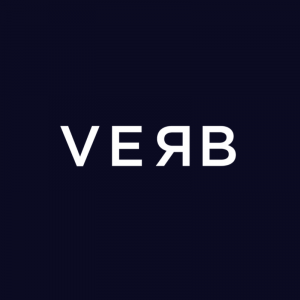All the things that matter for SEO in 2022

Reading time: 9 min
At the start of the age of the internet, many wondered just how luxury brands would replicate the exclusivity and quality they had established in the real world online. They needn’t have worried. Luxury brands have been more successful than any other type of brand in generating formidable revenue from the web.
Fast forward to today and, now, most luxury brands prioritise digital over physical retail. But what should their focus be on in 2022 to build market share, increase revenues and preserve their brand power online?
In this article, we’ll look at the dominant trends in:
- Content – what’s on your website
- Distribution – where else your content features online and your site’s relationship with the web
- Back-end specs – everything from load times to coding
Content in 2022
We’ve written before about how SEO for luxury brands differs from SEO for mass-market brands and why, even in a world of profitable paid-for online campaigns, they should prioritise spending on SEO. In 2022, where should this spend be directed?
Keyword-based categorisation
Luxury brand websites have an enormous advantage over mass-market brand websites. It’s easier for luxury brands to win press coverage and generate an online buzz thanks to the exclusive and desirable nature of their products and services. This coverage generates valuable links back to their site which gives them greater online authority in Google’s eyes. This extra authority pushes their sites and every page on them much higher in organic results.
But why bother if pay-per-click and social media advertising is very effective at getting your message in front of target consumers by demographic selection?
It’s because the data held by Google, Facebook, Instagram et al is incomplete and has been shown to contain significant errors. So, no matter how precisely you select your target audiences when advertising online, the unreliability of the underlying dataset means that there are large parts of the population who never see your ads but who would desire and can afford your products and services.
Think about what someone looking for your products or services would type into Google for your SEO campaign, similar to how you choose keywords on Google Ads dashboard. The backlinks you already have given you a great chance of achieving a high ranking very quickly meaning that the audiences that demographic advertising normally misses will now see your website when they search.
So, let’s say that you manufacture and install high-end shaker furniture. Don’t just target “shaker furniture”. Also go for more niche terms like “shaker bedroom furniture”, “shaker bathroom furniture”, “cream shaker style bedroom furniture” and more. The more precise the keyword someone chooses to search, the closer they are to making a purchase because they know what they want.
So, optimise your product descriptions. Research the niche keywords you find in SEMRush or Ahrefs and tag them to relevant products. If possible, create a landing page for each niche term listing all relevant products.
Recently, we wrote about how Pandora and Tiffany’s focus on competing on broad keywords had delivered significant new traffic for both brands. This approach has given them a significant advantage over their competitors.
Meta-titles and descriptions
When users search on Google, they now seem much more than paid ads and organic search results. They get Featured Snippers (see later), People Also Ask accordions, Local Packs (showing 3 local businesses and a small map denoting each business’s location), Answer Boxes, shopping carousels and more.
Users do often find what they want from these additional features but these features do crowd out organic search results. This is particularly so on mobile where clickthrough rates from organic searches have fallen by two-fifths.
Competition amongst brands now takes place in the meta-title and meta-description. Making them as click-worthy as possible is now more important than ever.
Meta-titles with the target keyword (the word(s) actually used by the searcher) generally rank higher and attract more clicks than titles not containing the keyword.
You can use up to 160 characters in the meta-description. With yours, provide the searcher with the promise that the information they’re looking for can be found on your page.
Google Passages
Google Passage examines specific sections of text from individual pages on your website. They already scan the whole content of your pages to test for relevancy to search terms. Now they’re doing so to rank individual sections of text (or “passages”) for relevance to the overall content of the page as well as the target keyword.
Although passages aren’t a factor in themselves in page ranking, they do present a new ranking opportunity. If a passage is really high relevance to a particular search term, Google may link directly to specific passages on.
This already happens. If you search for something on Google, click on a result and you’re taken half-way down a page to a specific section which is highlighted, this is Google Passages at work.
The growth of Featured Snippets
Featured Snippets appear at the top of Google’s search results pages below paid ads and above organic searches. They’re designed to present the information users are looking for straight away. Around one in ten search results pages contain Featured Snippets.
Featured Snippets win 35.1% of all clicks. To win them, create highly-focused 40–60-word blocks of texts (you could choose a paragraph or a list) underneath an H2. The H2 asks the question and the text answers what it is. You can see how this works by searching for “Tanzania luxury safaris” and then clicking on the Featured Snippet.
Video increasing in importance
Luxury brands excel in their use of video content. Consumers want more of it. Google have caught onto this now by introducing video content to their Featured Snippets.
We encourage all luxury brands to continue to produce video content throughout 2022. This year and going forward, we recommend particularly that you optimise each video for search with descriptive titles, full descriptions, category and subject tags to compete better against the growing volume of video content. We also recommend indexing different parts of video content so that consumers can jump forward to the bit they’re most interested in.
Make sure you include subtitles/closed captions too and not just for inclusivity purposes. Subtitles provide an accurate transcript of the contents of your video which also helps more efficient indexing for higher Google and YouTube rankings. Many people also watch videos with the sound off for various different reasons and they rarely staff with a non-subtitled video.
Including videos on product and blog pages is also a positive ranking signal and helps increase stickiness (how long someone stays on a page) and decrease bounce rates (the people who visit one page on your site and do nothing else).

Google Lens
Google Lens is an iOS and Android app available that allows a user to take a picture which Google then analyses for context using AI. It will then display search results based on its analysis. According to Google, it’s been used more than a billion times since its launch.
On product pages on your site, try to include as many images as possible so that Google indexes them. If someone then takes a picture of someone on the street with your product or takes a snap of an image in a newspaper of a celebrity with it, Google is more likely to recognise it and directly link a user to the product page on your website.
Pinterest offers a similar service, also called Lens.
Distribution in 2022
Content is one of the two major foundations on which a successful SEO strategy is built with the other being distribution. This means creating content which is of high enough quality that other websites want to feature it and link back to your website.
Below, we list the two main distribution strategies we’re focusing on providing clients this year.
Invest in Digital PR
Research, surveys and polls are particularly useful for digital PR campaigns.
Think of digital PR as public relations for the online age. Whereas traditional PR focused on getting brands and their products featured in newspapers and magazines every so often, digital PR is an ongoing campaign carried out on the Internet and social media whose purposes are to keep your brand top of mind and to boost the authority of your website.
Let’s say you’re an international luxury travel provider. You’ve recently carried out a survey about people’s top 10 favourite cities in South Africa. The customers you asked were based in the UK, France, and Spain.
Once your UK customer results were in, your digital PR team would contact the local press in each of the 10 cities chosen by UK travelers. These newspapers would want to carry the news that UK travellers think that their city is in the top 10 city destinations. They’ll hunt down the right contacts in newspapers and magazines in the top 10 destinations to get them to report it. And they’ll succeed. Then they’ll go through the same process again with the same titles for the destinations voted top by French and Spanish customers. At the same time, the digital PR teams will approach travel-related publications in the UK, France and Spain to persuade them to carry the results of the survey too.
From one simple survey, dozens, if not hundreds, of opportunities arise to get publicity and win backlinks to your site. Why is there such an appetite among publications? Compared with earlier times, newsroom budgets are a lot lower than they used to be and online journalists are under pressure to produce multiple articles every day. Most journalists and their editors need help from PR agencies to hit content production targets so, whereas it used to be difficult to get your brand’s name in print, it’s now much easier so long as you produce content aligned to a specific publication’s target audience.
Digital PR teams are also experts at creating a buzz on social media platforms which often become newsworthy themselves. Every story they create that gets picked up generates valuable publicity and even more valuable backlinks to your site.

Get onto podcasts and YouTube video channels
62% of Americans aged 12 and above listen to podcasts. There are over 950,000 podcasts with over 30,000,000 episodes available across a wide range of subjects.
While there is value in launching your own podcast, there is also value in appearing on others’ podcasts, especially when a podcast is of interest to your key target audiences. Most podcast appearances are not paid, however payback comes in the form of a link back to your site from podcast hubs, most of which are d-follow and have very high DA/DR rankings.
You can further repurpose your appearance on blogs by creating transcripts from your appearances and uploading them as a blog.
Back-end specs in 2022
Although less important than content and distribution, the technical architecture on which your website is built is still a ranking factor.
Remember the desktop experience
In the past ten years, mobile has overtaken desktop as the primary way to access to the internet although, in the last year, mobile use as a proportion fell slightly.
While we still continue to take a mobile first approach when building client websites, we also focus heavily on the experience for users on larger screens like desktops, laptops and tablets.
Mobile accounts for 64% of all e-commerce website traffic but, in terms of revenue, it’s level-pegging at 46% with desktop. People buy more per visit on desktop than on mobile.
That’s because, in our opinion, there’s more room to really showcase a product or service on desktop. This larger canvas makes it easier for visitors to immerse themselves in a product. A beautiful, well-designed desktop screen will always convey luxury much better than a mobile screen, no matter how well designed the mobile experience.
Core Web Vitals
Core Web Vitals are measurements taken by Google that attempt to measure the quality of the user experience. For example, big interstitial adverts that appear that users have to close will cause Google to mark down your website.
Core Web Vitals’ main focus is on speed of download and prioritise mobile experience over desktop experience. Make sure you do everything possible to reduce load time across each page as much as you can because if a competitor’s site is of similar authority and quality to yours but it loads faster, Google is likely to rank your competitor higher.
Get a full web audit with VERB Brands
Verb Brands comprises a team of experienced, creative and target-driven marketing professionals with a talent for creating opportunities for luxury brands.
From SEO to influencer marketing and creative to digital PR, we connect you and your products and services to your target audiences online and offline.
To find out more about VERB Brands and for an assessment on how we can work together with your company, please reach out through our contact form. We’d love to start supporting you on this journey!









